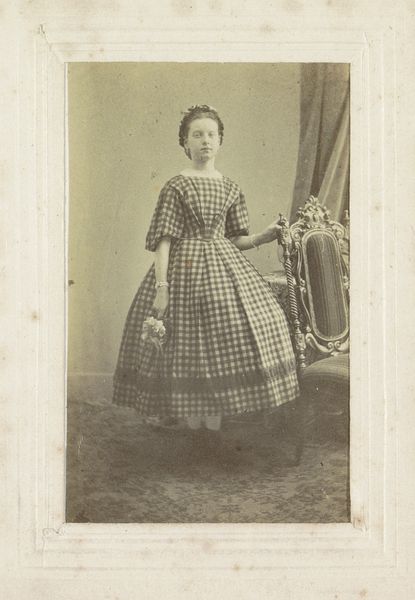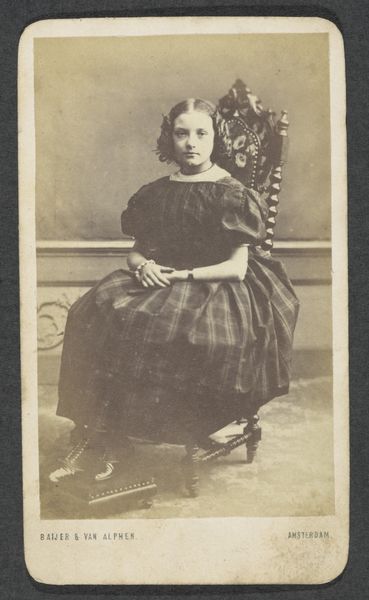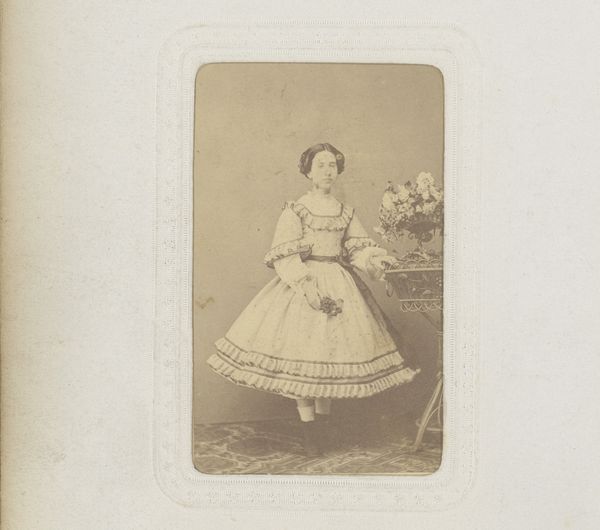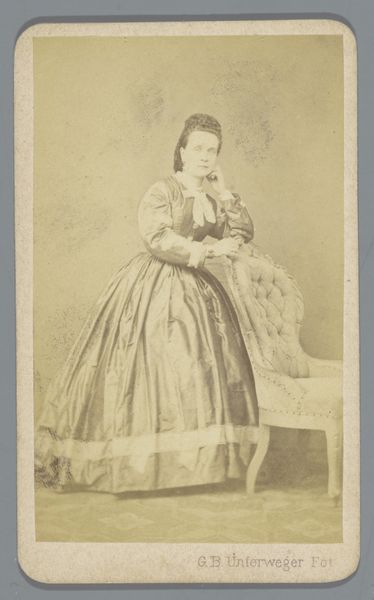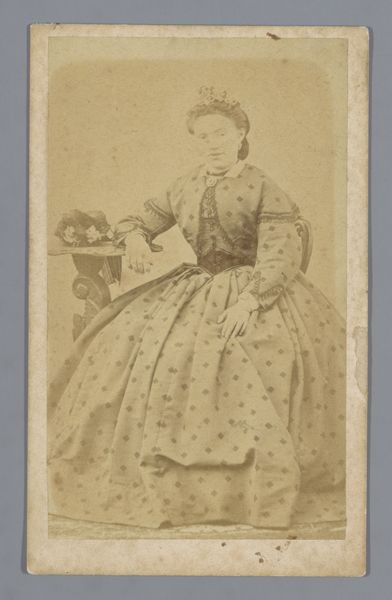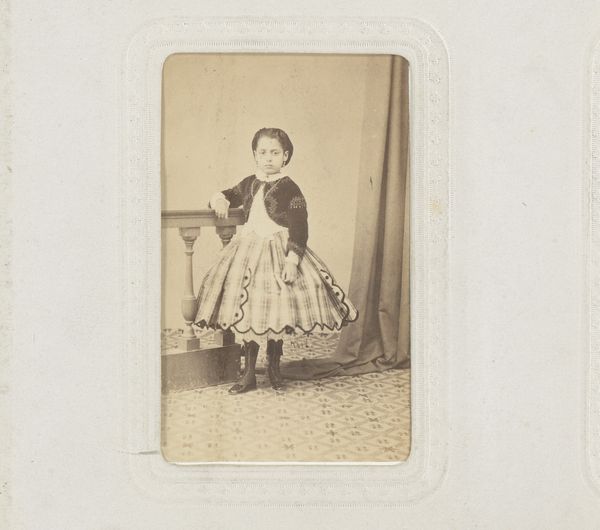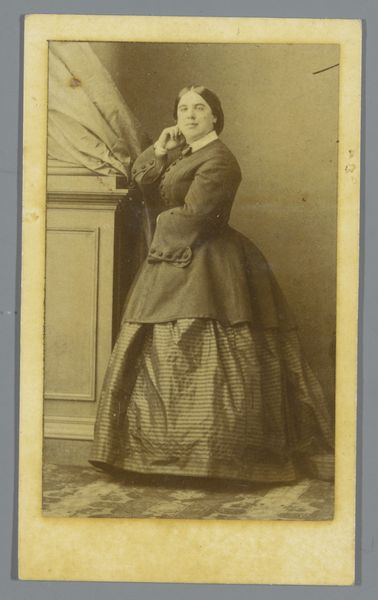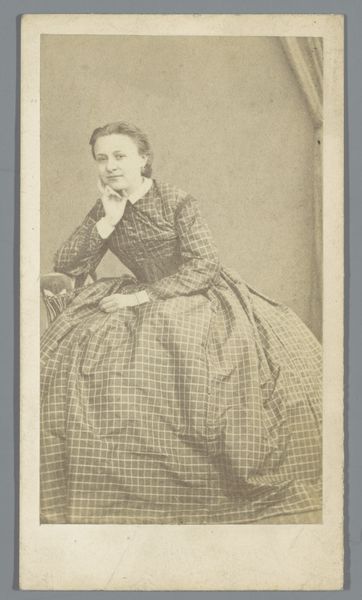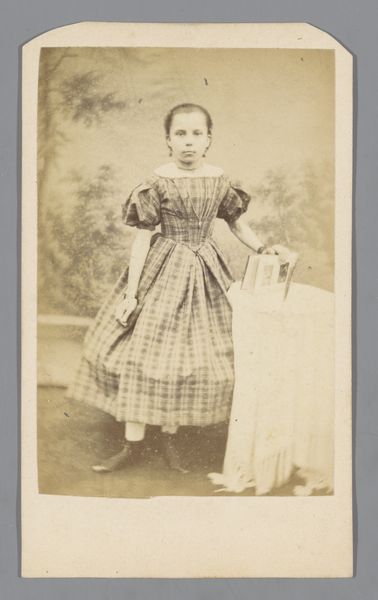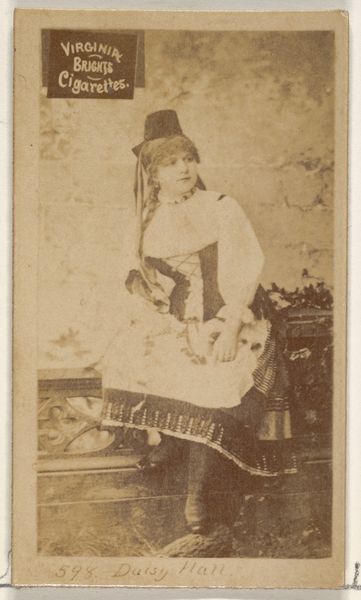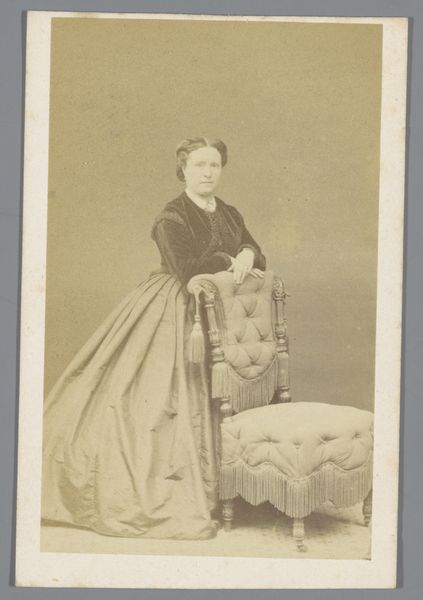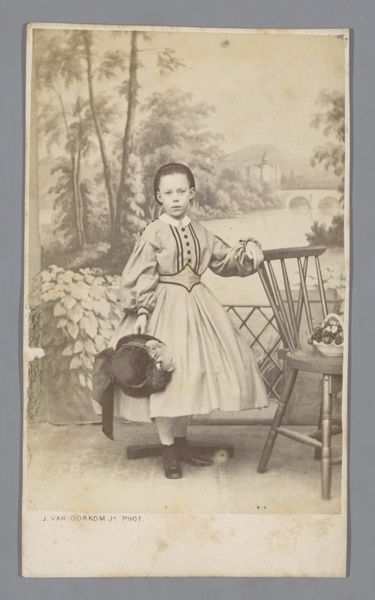
photography, gelatin-silver-print
#
portrait
#
photography
#
coloured pencil
#
gelatin-silver-print
Dimensions: height 100 mm, width 58 mm
Copyright: Rijks Museum: Open Domain
Curator: Looking at this “Portret van een onbekend meisje”, dating from 1855 to 1885 and attributed to C.W. Vink, one is struck by the formality and the techniques deployed in this gelatin-silver print, don't you agree? Editor: I am! My immediate impression is one of quiet introspection. The girl's gaze, though direct, feels withdrawn. She’s enclosed, both physically by that enormous checkered dress and perhaps psychologically. The colours, muted with age, reinforce that subdued feel. Curator: Yes, the muted tones create an antique charm. What I find compelling is the staged nature of it all—the backdrop, clearly a painted scene, contrasts with the relatively natural pose of the girl. It reveals much about the public role of imagery and the societal norms dictating portraiture during that era. Editor: Indeed. Backdrops like that transport me. We tend to perceive the Victorians through such severe lenses, yet these artificial backgrounds provide a window into their imaginations, hinting at dreams and fantasies that contrasted with the stricter societal expectations. What about the chequered pattern of her dress? It almost feels too prominent. Curator: A very relevant point! The pattern likely served as a signifier, possibly alluding to the family’s economic status or affiliation with a particular movement, it demands to be understood. Such images played crucial roles in establishing and broadcasting identity. Photography like this became part of building a social history of the bourgeoisie. Editor: And think about the young girl: how much power she actually held in this performative act. The pressure to embody the values, the constraints put upon young woman during the time... Her seemingly direct gaze turns almost confrontational viewed from this perspective, like she is questioning it all. Curator: I concur; in the late 19th Century, photographic portraits became powerful tools in controlling narratives and cementing societal power structures. Looking closer at the background we may even speculate how accurate it presents social realities, creating new layers in her “real life”, a tension only photograph offers. Editor: Absolutely. Looking at this portrait from a contemporary viewpoint it almost appears absurd in some parts. It helps to contemplate the cultural codes underpinning this photographic genre, revealing more of the time than perhaps even the artist fully appreciated. Curator: It’s true—a reminder of how art continues to generate discussion long after its creation and how even through seemingly static images like this we understand cultural evolution in a very different ways than when it was shot. Editor: Agreed. In fact, revisiting photographs of this kind underscores how vital art history and understanding symbolism is. Thank you!
Comments
No comments
Be the first to comment and join the conversation on the ultimate creative platform.
